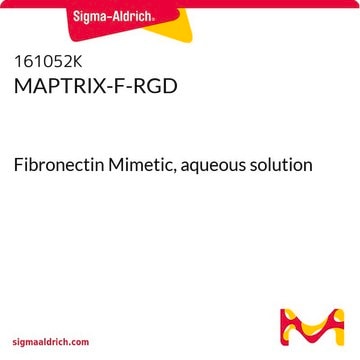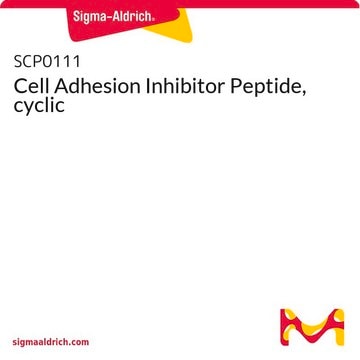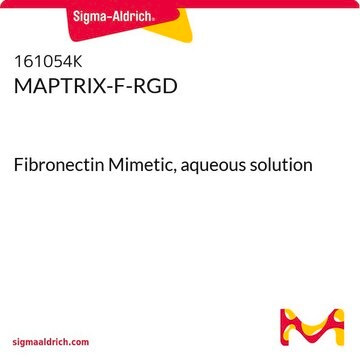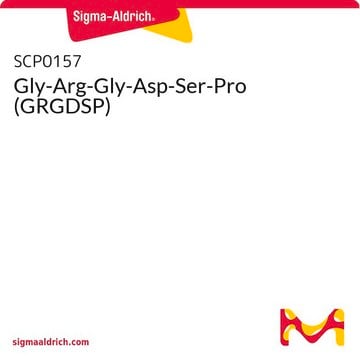TRUERGD
TrueGel3D RGD
Integrin Adhesion Peptide
Synonym(s):
3D cell culture matrix
About This Item
Recommended Products
shipped in
dry ice
storage temp.
−20°C
General description
Application
Features and Benefits
*Doa : 8-amino-3,6-dioxaoctanoic acid
Components
Legal Information
Storage Class Code
10 - Combustible liquids
Certificates of Analysis (COA)
Search for Certificates of Analysis (COA) by entering the products Lot/Batch Number. Lot and Batch Numbers can be found on a product’s label following the words ‘Lot’ or ‘Batch’.
Already Own This Product?
Find documentation for the products that you have recently purchased in the Document Library.
Customers Also Viewed
Articles
TrueGel3D™ synthetic hydrogel can be used to study co-culture of tumor and stromal cells.
TrueGel3D™ synthetic hydrogel can be used to study co-culture of tumor and stromal cells.
TrueGel3D™ synthetic hydrogel can be used to study co-culture of tumor and stromal cells.
TrueGel3D™ synthetic hydrogel can be used to study co-culture of tumor and stromal cells.
Protocols
TrueGel3D™ hydrogel enables cell encapsulation for 3D culture, mimicking native tissue environment with chemically defined properties.
TrueGel3D™ hydrogel enables cell encapsulation for 3D culture, mimicking native tissue environment with chemically defined properties.
TrueGel3D™ is a chemically defined hydrogel for 3D cell growth, facilitating microchannel filling with slow gelation.
TrueGel3D™ hydrogel enables cell encapsulation for 3D culture, mimicking native tissue environment with chemically defined properties.
Our team of scientists has experience in all areas of research including Life Science, Material Science, Chemical Synthesis, Chromatography, Analytical and many others.
Contact Technical Service









